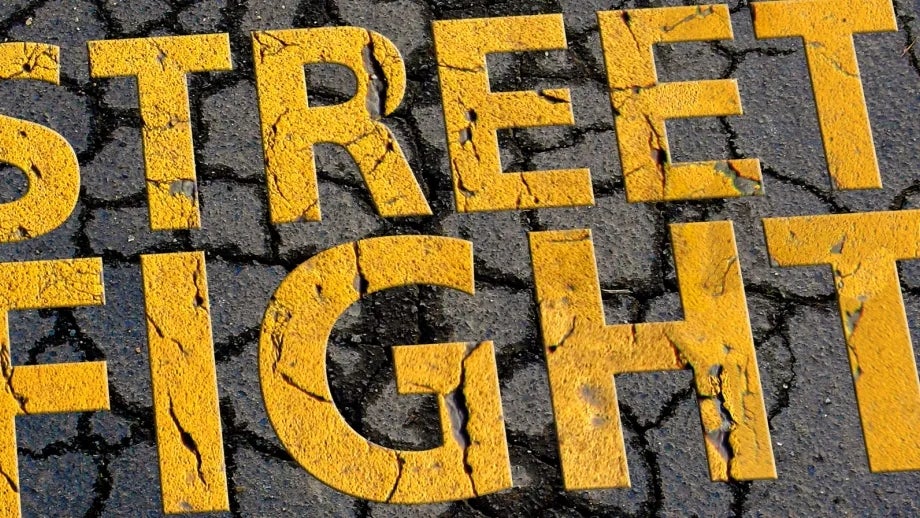Street Fight, Part 6: What Can Be Done?
The allocation of tax dollars lies at the very heart of cities’ and counties’ continuing struggle to elevate the quality of Bay Area pavement. Predictable, long-term funding is imperative if local governments are to travel toward a pothole-free future. But the gap between available funds and identified needs is enormous. And every local government must balance a host of competing priorities that includes streets and roads, public safety, parks and recreation, employee and retiree benefits, and many more.
To simply hold the line and maintain the current "fair" condition (PCI of 66) of the Bay Area’s local streets and roads, new revenues roughly equal to a 16-cent increase in the gas tax — and dedicated to local street and road maintenance — would be needed. To reach MTC's goal of an average “good” pavement condition (PCI of 75) across the region, the new funding required would be equal to a 27-cent increase in the gas tax. To also improve the region’s curbs, sidewalks, storm drains, streetlights and other non-pavement assets to a “good” condition, another 21 cents per gallon would be necessary.
Steep as the climb toward adequate funding for local streets and roads may be, the challenge is made more daunting by the similar shortfalls facing other elements of the regional transportation network. Plan Bay Area, the long-term transportation investment and land-use plan adopted last year by MTC and the Association of Bay Area Governments, identifies a $17 billion shortfall in funding to keep buses, railcars, ferries, stations, tracks and other transit capital assets in a state of good repair from 2013 through 2040; plus another $8 billion in unfunded needs for maintenance of state highways in the region during this time.
Plan Bay Area directs $10 billion through 2040 to help cities and counties maintain the region’s existing pavement condition. These are federal funds that may be invested at MTC’s discretion, and are accessed by local governments through the Commission’s new One Bay Area Grant (OBAG) program. A key requirement is that to qualify for OBAG funding, cities and counties must embrace the concept of Complete Streets, a design approach that has emerged over the past generation to make roadways — particularly those in urban areas — more pedestrian- and bicycle-friendly. While there is no standard template, common elements typically include bike lanes, sidewalk bike racks, transit stops, pedestrian signals, street trees and curb ramps. By incorporating these elements into Complete Streets, transportation agencies help ensure that people of all ages and abilities can use the street safely.
- Pavement Costs Attributed to Cars
- Pavement Costs Attributed to Buses/Trucks
- Pavement Costs Attributed to Bicycles
- Lights/Signs/Markings
- Curb and Gutter
- Storm Drain
- Sidewalk and ADA Ramp
- Traffic Signal
- Street Furniture and Plantings
Because each street is unique, the cost of upgrading to a Complete Street can vary widely from project to project. But, on average, costs for Complete Street projects tend to run 15 percent to 25 percent higher than those for projects without these enhancements.
While voters in El Cerrito, Moraga and Orinda have decided that local streets are a civic priority worthy of predictable, long-term investment, these cities remain the exception rather than the rule. Together, the Bay Area's nine counties and 101 cities currently invest about $285 million annually in maintaining local streets and roads. If investment continues at this level, average regional pavement quality will deteriorate to poor condition (PCI of 45) by 2040, and the typical Bay Area street of the not-too-distant future would closely resemble today's county road in rural Sonoma County. To bring the Bay Area's average stretch of pavement up to good condition (PCI of 75), the region will need to triple maintenance expenditures to $875 million. The PCI score chart details the average pavement conditions that are projected at each investment level.
It remains to be seen whether more local governments will follow the lead set by El Cerrito. But all governments, when considering the renewal and/or reauthorization of funding measures and long-range plans, must heed the cost of maintaining streets and roads at a good state of repair. Otherwise, both the fiscal and physical challenges facing local streets and roads will endure for another generation, and the pothole battle surely will be lost.


Submit your comment
In order to receive a reply to your comment, please provide an email address.